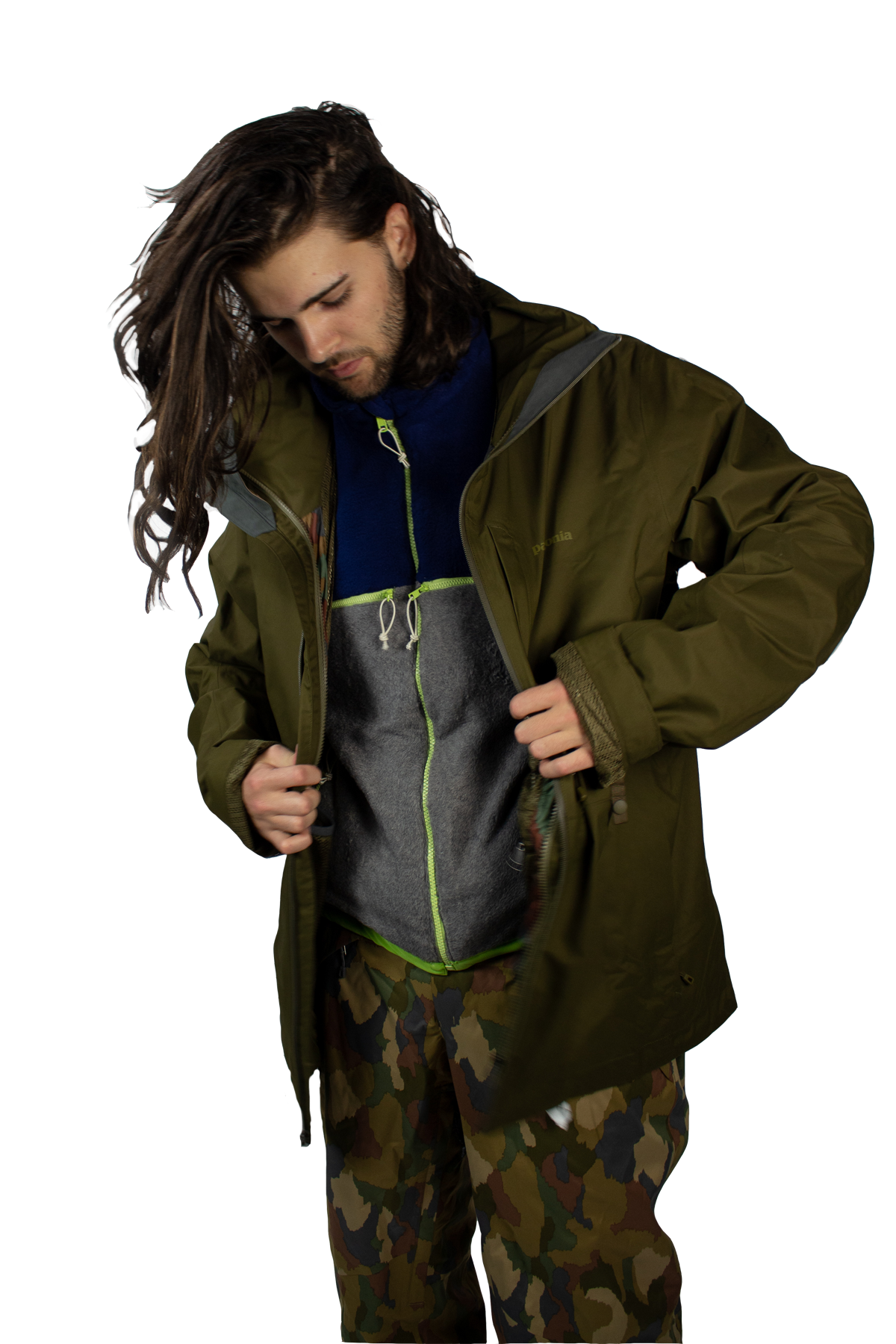
NASA Wearable Technology Design Challenge
I worked in a group of 2 and partnered with Patagonia to conduct quantitative/qualitative research and come up with a design solution for avalanche rescue. Workshop hosted by NASA. Final project presented at the Johnson Space Center in Houston, TX.
Scope
UX Research, User Testing, Prototyping, Garment Design
Team
Samuel Hardman, Kristine Yang
Duration
4 months
Overview
Process
Time, Stakeholders, Capacity of Teams, Team Budget
Adobe Creative Suite, Industrial Sewing Machine, Pattern Making
Tools
In my junior year of college, I worked with Patagonia to design wearable technology for NASA that could assist in avalanche rescue. The challenge was to come up with solutions to ensure the rescue technology operated under a low frequency of 457kHz, without being affected by electromagnetic interference caused by electronic devices. Our team came up with an innovative solution, creating a wearable that not only shielded electronic devices from causing interference, but also provided a secure placement for the transceiver.
Limitations
Solutions
We designed a wearable garment that effectively shields the transceiver from electromagnetic interference caused by electronic devices and metal objects. Our final design featured two shielding pockets at the bottom, one on the right chest, and a transceiver pocket on the left chest, along with mesh panels on the sides for ventilation and a zipper garage on the collar. The pockets were constructed with secure inner pockets and flaps to cover the zipper.
Problem Statement
OVERVIEW
Avalanches are a major concern while performing activities in extreme snow environments. It is crucial to have avalanche transceivers because the chance of surviving an avalanche depends on the amount of time it takes to locate the victims. Transceivers are turned on and stored in a secure location when the user is mountaineering. In the case of an avalanche, anyone who is not caught in the avalanche pulls out their transceiver and turns it to search mode in order to locate the victim(s).
When a person goes into snowy backcountry areas, they are putting themselves at risk of encountering an avalanche. The victims of avalanches die of suffocation. A buried victim has approximately 35 minutes before they run out of oxygen.
What Is Avalanche Transceiver?
OBSERVE I
There are a wide variety of transceivers and they all operate at 457 kilohertz. Three antenna transceivers are the most reliable. The maximum range of most transceivers is 60 meters. The batteries last from 200 to 300 hours.
Signal Interference
OBSERVE Il
Electronic devices and metal objects can cause interference when the transceiver is sending and receiving signals. These devices create disruptions in the electromagnetic fields emitted by the transceivers. To avoid the noise, these companies prescribe a minimum distance to keep other devices away from the transceiver and to turn the electronics off. However, this can be hard to achieve, and in the case of an avalanche, the only thing on every rescuer’s mind is taking out their transceivers and finding their friend.
Objective & Hypothesis
Our goal is to create a wearable garment that protects avalanche transceiver from the electromagnetic interference caused by electronic devices and metal objects.
If our wearable protects the transceiver from electromagnetic interference, then the user will be able to conduct a quicker and more efficient search for a victim of an avalanche.
DEFINE OUR GOALS
What Equipments Are Used In Avalanche Rescue?
SCENARIO INSIGHTS
An average of 200 people are killed by avalanches every year. Burial time is the critical factor, as the survival rate declines sharply after eight minutes. Thirty-five minutes is the threshold of time before a victim begins to run out of oxygen. Previous studies have shown that avalanche transceivers and standard rescue equipment (transceiver, probe, and shovel) increase the chance of survival. Other avalanche equipment includes avalungs, airbags, and RECCO reflectors. Ideally, all these equipment working together would give you the highest possible chance of survival.
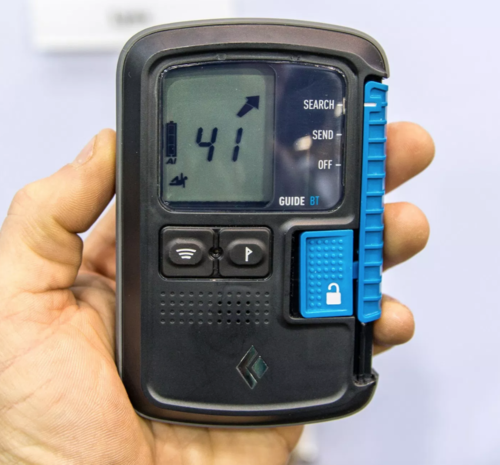


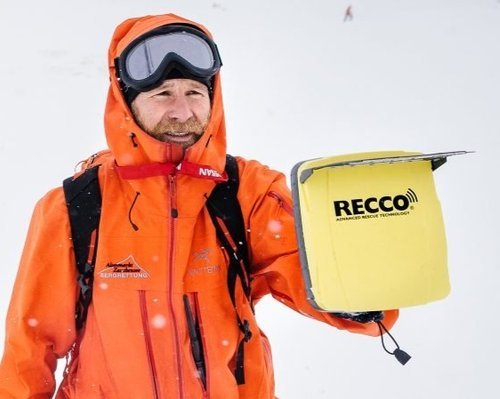
How to Use An Avalanche Transceiver?
CURRENT USER CYCLE I
An average of 200 people are killed by avalanches every year. Burial time is the critical factor, as the survival rate declines sharply after eight minutes. Thirty-five minutes is the threshold of time before a victim begins to run out of oxygen. Previous studies have shown that avalanche transceivers and standard rescue equipment (transceiver, probe, and shovel) increase the chance of survival. Other avalanche equipment includes avalungs, airbags, and RECCO reflectors. Ideally, all these equipments working together would give you the highest possible chance of survival.
What About RECCO?
CURRENT USER CYCLE Il
Recent studies show that only 75% of mountaineers carry an avalanche transceiver when in the backcountry. For this reason, many backcountry outerwear brands incorporate RECCO reflectors in their garments in order to add safety precautions to their garments. The detectors transmit a highly directional radar signal of 800 MHz frequency, and the reflectors work without batteries. It’s recommended to have at least 2 reflectors on the body to ensure the best signal. Given the detectors are only used by an organized rescue team, the efficiency of rapid extraction is still a major concern. As a result, experts suggest that the RECCO system does not replace the use of an avalanche transceiver; the ideal circumstance for an avalanche rescue is to have both a transceiver and RECCO reflectors on the victim.
Performance on Modern Transceivers
CURRENT TECHNOLOGY & CONSTRAINTS
According to Patagonia’s background research on the performance of a modern avalanche transceiver, an expert suggests that in order to stabilize the reliability of the transceiver signal, external hardware would be required, along with extra antennas, connectivity interface, and software. Another potential solution could be WSJT, a software designed to extract and enhance data from weak radio signals. However, both of these design opportunities are still conceptual solutions and would challenge the current EN standard. A suggestion to create a cloaking pocket to shield the transceiver from interference was also suggested. This would be an interim improvement that works without changing any of the technology of current transceivers.
Backcountry Wears Anatomy
MARKET INSIGHTS
After having a better grasp of the problem background and design constraints, me and my partner delved into market research to pinpoint some key features of backcountry wear for further project development.



TESTING l
Transceiver Performance Testing
Moving forward, we talked to an expert with a background in avalanche rescue training and conducted a performance test on a transceiver. The model used for testing is Black Diamond Beacon BT.
-
Bury Transceiver A in the snow
Transceiver B on search mode to locate Transceiver A
Result
As Transceiver A was buried in the snow, Transceiver B couldn’t pick up the signal within the range of 80 meters. According to the map, the distance is less than 80 meters and it’s a 5 minutes quick walk between the two. Avalanche transceivers can only reach a maximum distance of 60 meters and it’s much shorter than we expected, even when the transceiver comes with three antennas (best signals on the market).
The technology requires its users to know the rescue procedure and how to operate the transceiver well. It’s outdated and not very user-friendly.
TESTING ll
Placement Testing
The goal of this test is to observe users’ preference for transceiver placement on their bodies. This would help us decide what kind of garment we want to move forward with.
Result
We tested 15 users to see where they thought the transceiver was most accessible, comfortable, and secure. From the results, we gathered that most users preferred placing the transceiver on their upper bodies for comfort and harness for better security.
TESTING lll
Signal Interference Testing
Moving forward, we had to test the signal interference of different electronic devices and fabrics. Using a spectrum analyzer, we tested the following items:
Performance fabrics
Shielding fabrics
iPhone
Walkie-talkie
Portable charger
Flashlight
Setup
Testing the signal interference at 457 kHz between Transceiver A (simulated by spectrum analyzer) in search mode and Transceiver B in send mode.
Result
What we found in this testing:
Which fabrics do not cause signal interference?
The levels of interference caused by different electronic devices
Which shielding fabrics block signal interference most effectively?
Based on our results, we decided to implement FL100 polyester as shielding material for electronic devices.
Our Proposal
We decided to create a vest that will replace the transceiver harness. The vest includes cloaking pockets to store electronic devices and prevent interfering during the rescue. It also comes with a designated pocket to securely store the transceiver.
DESIGN OBJECTIVE
IDEATION l
Concept Tech Packs
We primarily focused on pocket placements and side adjustment to replicate the security of a harness.


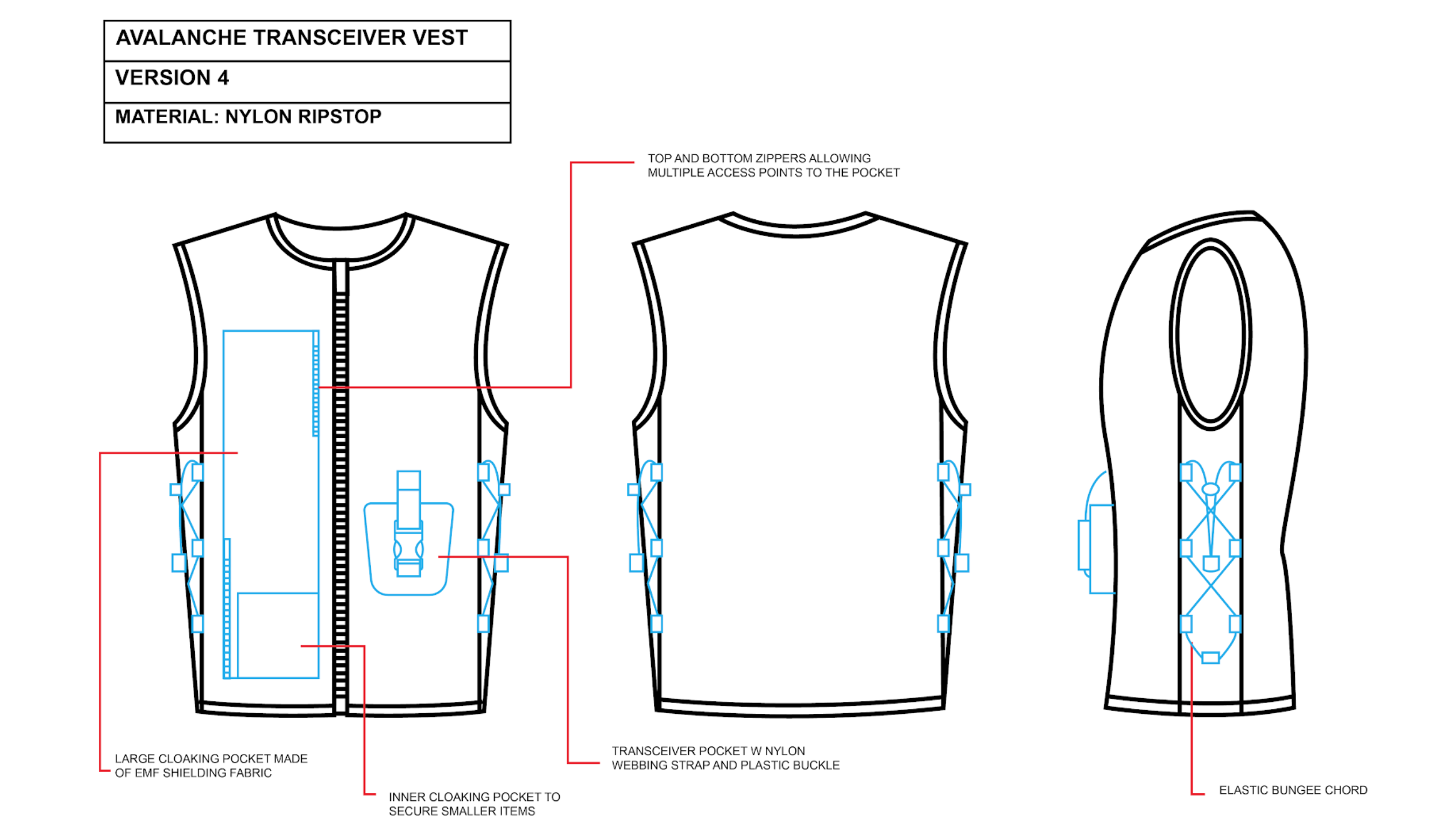
IDEATION ll
1st Prototype - Garment Construction
IDEATION lll
2nd Prototype - Construction Refinement
We implemented some actual materials to refine our prototype, as the 1st prototype is made of muslin material and thus too fragile for user testing. In our 2nd prototype, we added mesh fabric on both sides for ventilation purposes, as well as adjustable elastic leashes to simulate the security of the harness.
IDEATION lV
Pocket Placements
From our last prototype, we sorted out the general construction of the vest and started focusing on pocket placements and their measurements on the garment.
IDEATION V
3rd Prototype - Material Testing
We used the actual materials to test the feasibility of the patterns and construction before delving into the final deliverable.
OUR SOLUTION
Hi-Fi Prototype
The vest comes with 4 pockets: one dedicated pocket for the transceiver and three pockets for electronic devices. The side panel adjustments are removed as we found a secure housing solution for the transceiver.

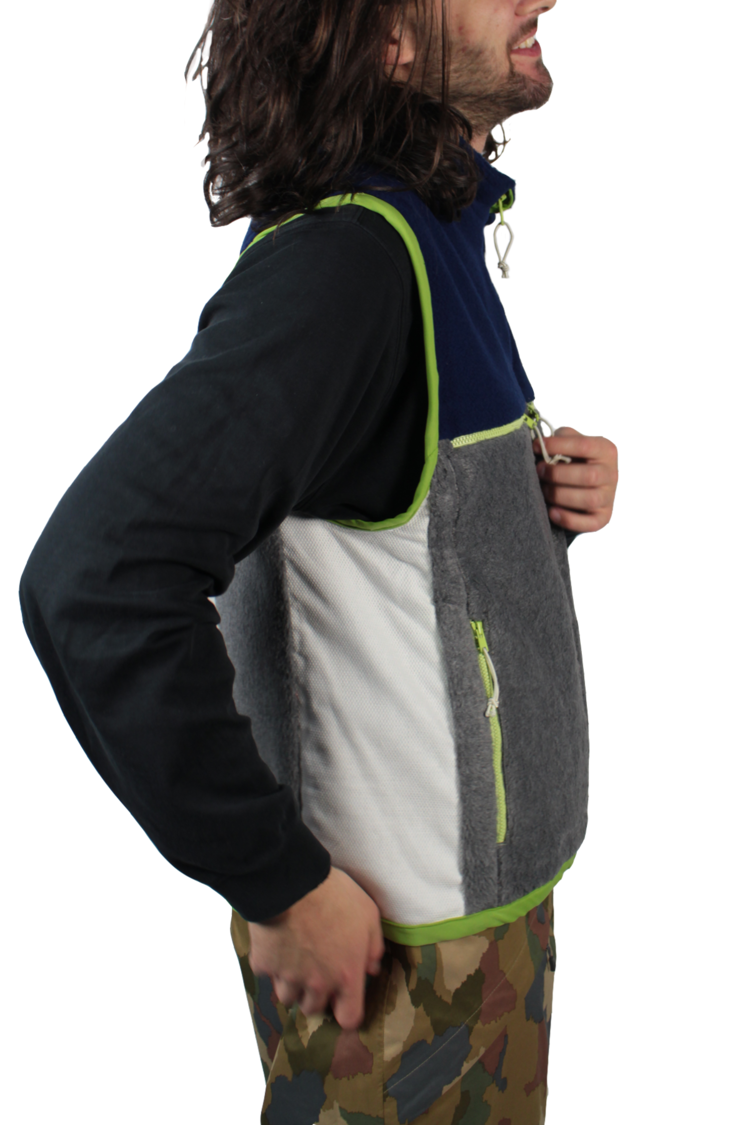


PRODUCT ANATOMY
How Is It Built?
HIGHLIGHT I
Transceiver Pocket
An inner pocket that has the perfect fitting for the transceiver. Made of Spandex that allows different sizings. There’s also a loop inside the pocket to hook the leash.
HIGHLIGHT Il
Shielding Pockets
Made of FL 100 fabric. Each pocket can fit the size of a smart phone or walkie-talkie.
HIGHLIGHT Ill
It’s 100% Shielded!
Each shielding pocket comes with a flap right under the zipper. The purpose is to enhance the best performance of blocking signal interference from electronic devices.
HIGHLIGHT IV
Zipper Garage
After talking to users with backcountry experience, we learned that comfort is the priority when it comes to their wearables. We decided to implement a zipper garage on the vest to reduce the discomfort on the neck.
USABILITY TESTING
Does It Work?
Turning Dreams Into Reality in 4 Months
Given the limited time and project scale, there’s always room for improvement. As for our next steps, we would like to have a performance test in a backcountry snowy environment. We would also want to improve the fitting on both male and female body forms. In addition, we will explore the potential technology that could be incorporated into the garment and boost the signal of the transceiver.
Throughout this collaboration, I had to go far and beyond. Despite working in a smaller group, I pushed myself to build a functional wearable with no prior experience, from pattern making to communicating clients’ needs & wants and fulfilling industry standards. I was also blessed with my project partner, who is supportive and pulled through numerous all-nighters together just to make this mission impossible work! This golden opportunity to work with industry professionals at Patagonia is priceless. As I presented the final design in front of NASA scientists and designers at the Johnson Space Center, I saw the interdisciplinary thought process required of turning an idea into reality.
Special Thanks
Technology Collaboration Center, Houston, TX.
Bob Prochnow, Executive Director
Patagonia Inc.
Michelle Legatt, Material Innovation Engineer
Pratt Institute, School of Design
Rebeccah Pailes-Friedman, Adjunct Professor with CCE, Industrial Design + Wearable Tech
Helio Takai, Chairperson, Department of Mathematics and Science
















